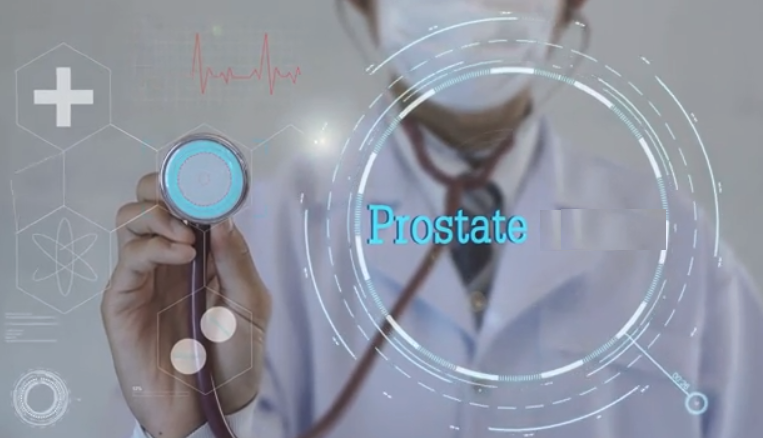The prostate is susceptible to a variety of syndromes and various pathologic conditions.
To see a list of products that perform a protective function for the prostate, click "Where is this found?"

Components that help in prostate protection are substances that can contribute to the health of the prostate gland. Here are some examples
- Lycopene. An antioxidant found in tomatoes, it can help reduce the risk of prostate cancer.
- Omega-3 Fatty Acids. Found in fatty fish, flaxseeds, and walnuts, they can reduce inflammation and aid in prostate health.
- Zinc. Present in pumpkin seeds, lean meat, and legumes, it's essential for prostate health.
- Green Tea. Contains compounds that can help prevent prostate cancer.
- Saw Palmetto. An herb traditionally used to support prostate health.
- Soy Isoflavones. Found in soy products, they may have beneficial effects on the prostate.
- Vitamin E. An antioxidant that can help protect the prostate.
- Selenium. A mineral that can reduce the risk of prostate cancer.
- Cruciferous Vegetables. Vegetables like broccoli, cauliflower, and Brussels sprouts contain compounds that can help protect the prostate.
- Regular Physical Exercise. Helps maintain a healthy body weight, which is important for prostate health.
Components that can contribute to or exacerbate prostate diseases include various factors that can increase the risk of prostate problems. Here are some examples
- Diet High in Saturated Fats. Foods high in saturated fats, like red meats and dairy products, can increase the risk of prostate diseases.
- Alcohol. Excessive alcohol consumption can be associated with an increased risk of prostate issues.
- Lack of Physical Exercise. A lack of regular physical activity can increase the risk of prostate diseases.
- Smoking. Cigarette smoking can increase the risk of prostate cancer and other prostate diseases.
- Obesity. Excess weight can be associated with an increased risk of prostate cancer and other prostate conditions.
- Excess Calcium. High calcium intake, especially from supplements, may be linked to an increased risk of prostate cancer.
- Advanced Age. The risk of prostate diseases increases with age.
- Family History. A family history of prostate diseases can increase personal risk.
- Exposure to Chemicals. Certain chemicals, like those found in industrial work environments, can increase the risk of prostate cancer.
- Diet Low in Vegetables. A diet low in fruits and vegetables can reduce the intake of essential nutrients for prostate health.
Studies
Benign prostatic diseases:
- benign prostatic hyperplasia
- chronic prostatitis/chronic pelvic pain syndrome
Benign prostatic hyperplasia (BPH) and other prostatic diseases share many observational and mechanical features with cardiovascular disease. Both BPH and cardiovascular disease increase significantly with age and affect a disproportionate number of men from racial/ethnic minority populations. Pharmacotherapy and surgical options are the treatments most often discussed in the medical literature for the 2 conditions, and these treatments have demonstrated significant efficacy, regardless of the severity of the condition. Obesity, lack of physical activity, dyslipidemia, diabetes mellitus, higher blood pressure, an unhealthy heart diet, and other factors that increase the risk of cardiovascular disease also appear to be associated with an increased risk of BPH. However, the potential for lifestyle changes to prevent or reduce the severity of BPH, especially as an adjunct to conventional treatments, has not received significant attention, even in recent specialist treatment guidelines. Because lifestyle changes can influence the risk of developing BPH or its progression, physicians need guidelines they can use to educate patients about the potential links between increased risk of cardiovascular disease and increased risk or increased severity of BPH. Patients need to know that a heart-healthy lifestyle is also a prostate-healthy lifestyle. This article provides educational and lifestyle recommendations that can favorably influence BPH and improve overall health in men (1).
References_______________________________________________________________________
(1) Moyad MA, Lowe FC. Educating patients about lifestyle modifications for prostate health. Am J Med. 2008 Aug;121(8 Suppl 2):S34-42. doi: 10.1016/j.amjmed.2008.05.025.
Brassetti A, Ferriero M, Napodano G, Sanseverino R, Badenchini F, Tuderti G, Anceschi U, Bove A, Misuraca L, Mastroianni R, Proietti F, Gallucci M, Simone G. Physical activity decreases the risk of cancer reclassification in patients on active surveillance: a multicenter retrospective study. Prostate Cancer Prostatic Dis. 2021 May 18. doi: 10.1038/s41391-021-00375-8.
Vasavada SR, Dobbs RW, Kajdacsy-Balla AA, Abern MR, Moreira DM. Inflammation on Prostate Needle Biopsy is Associated with Lower Prostate Cancer Risk: A Meta-Analysis. J Urol. 2018 May;199(5):1174-1181. doi: 10.1016/j.juro.2017.11.120.
Freeman MR, Solomon KR. Cholesterol and benign prostate disease. Differentiation. 2011 Nov-Dec;82(4-5):244-52. doi: 10.1016/j.diff.2011.04.005. Epub 2011 Aug 20.
Lopez W, Nguyen N, Cao J, Eddow C, Shung KK, Lee NS, Chow MSS. Ultrasound Therapy, Chemotherapy and Their Combination for Prostate Cancer. Technol Cancer Res Treat. 2021 Jan-Dec;20:15330338211011965. doi: 10.1177/15330338211011965.
Cata ED, Andras I, Telecan T, Tamas-Szora A, Coman RT, Stanca DV, Coman I, Crisan N. MRI-targeted prostate biopsy: the next step forward! Med Pharm Rep. 2021 Apr;94(2):145-157. doi: 10.15386/mpr-1784.
Jeong IG, Lim B, Yun SC, Lim JH, Hong JH, Kim CS. Adjuvant Low-dose Statin Use after Radical Prostatectomy: The PRO-STAT Randomized Clinical Trial. Clin Cancer Res. 2021 May 19:clincanres.0480.2021. doi: 10.1158/1078-0432.CCR-21-0480.



